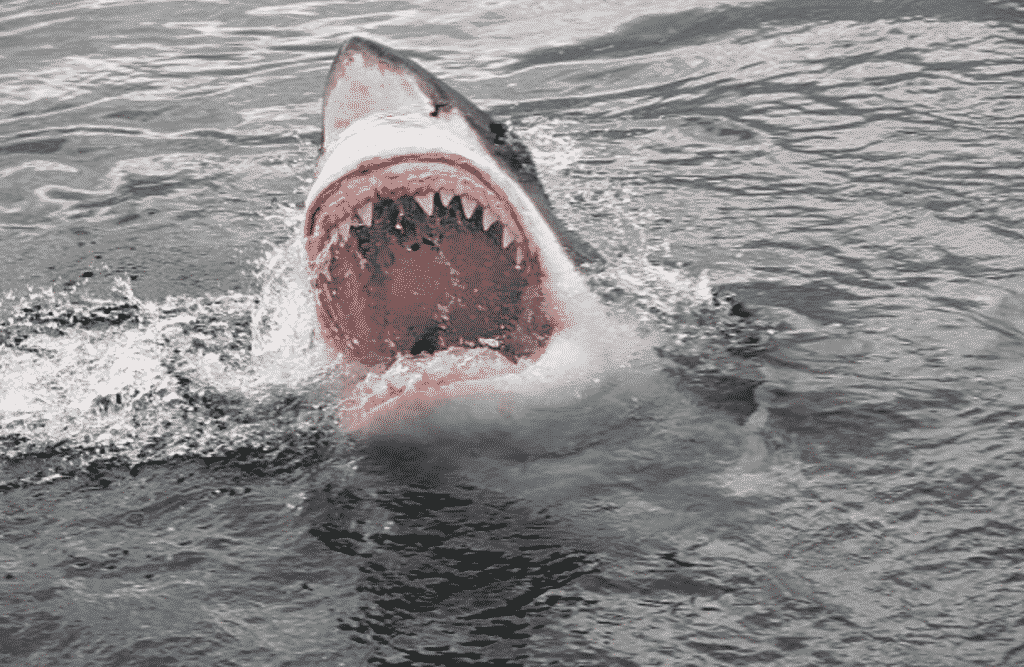Do you want to learn about Orca vs Great White Shark?
Orca and the great white shark are two of the most fearsome fishes in the ocean, but have you ever wondered which fish is more dangerous, the orca or the great white shark? Here we will dig deep into the characteristics of the two fishes and compare them in every aspect.
Famously known as killer whales, Orcas are the most giant dolphins and one of the most impressive hunters in the world. They’re promptly unmistakable by their remarkably high contrasting shades.
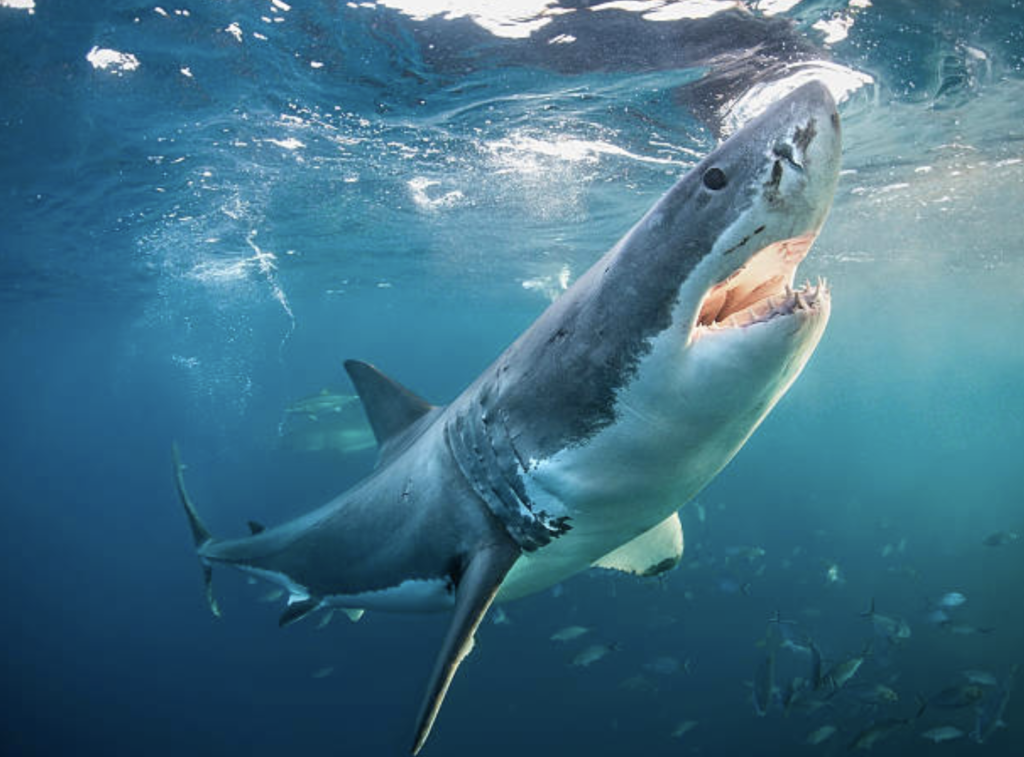
Intelligent and social, orcas make a wide assortment of communicative sounds, and each pod makes sounds its members will recognize even when they are at a significant distance.
They use echolocation for communication and hunting; they utter sounds that move underwater until they encounter an object; after contact, they bounce back and uncover the object’s area, size, and shape.
Great whites are the biggest predatory fish found in calm coastal waters all over the planet. Most people think of them as mindless killing machines; however, as scientific research on them increases, this image of great whites as killing machines is slowly starting to fade.

The name “killer whale” is actually derived from their striking white undersides. These creatures are sleek, streamlined swimmers with torpedo-like bodies and robust tails, capable of propelling them through the water at impressive speeds of up to 15 miles per hour. They exhibit remarkable agility and can breach the water’s surface entirely, resembling whales, as they hunt for prey from below.
Now let’s look at some of the characteristics of the two fishes:
| Key Points: Orca vs Great White Shark |
| Great whites are the biggest predatory fish found in cool coastal waters all over the planet. Orcas, or killer whales, are the biggest of the dolphins and one of the most impressive hunters in the world. |
| The orca is superior to the great white in size, weight, and speed and has a longer lifespan. |
| The great whites are highly adapted predators and solitary hunters, whereas Orcas hunt in pods (groups of up to 40 members). |
| Both these creatures display countershading, which enables them to blend in with the environment and avoid being spotted by their prey. |
| Great white sharks live in practically all beachfront and offshore waters, which have water temperatures somewhere between 12-24 °C on the other hand, Orcas are tracked down in all seas and most oceans. |
| In a head-to-head battle, the orca is superior to the great white shark in almost every way size, speed, and intelligence. In the wild, orcas have been seen going after great white sharks. |
Size – Orca vs Great White Shark
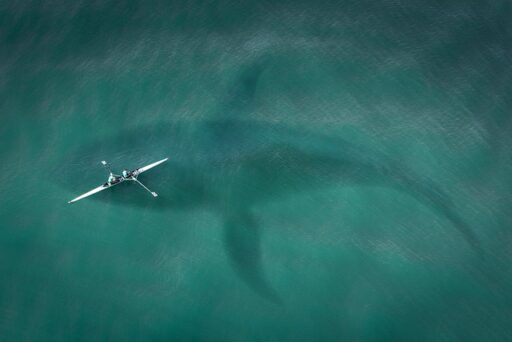
In the case of great white sharks, sexual dimorphism is present, so females are more significant than males. On average male great whites grow to a size of 11 to 13 feet, whereas female sharks grow to a length of 15-16 feet on average.
But in some rare cases, great whites can grow as big as 20 feet or higher. The most extensive recorded female great white is 20 feet long. When great whites are born, they are around 1.2 m in size and grow approximately 25 cm yearly.
Sexual dimorphism is also present in Orcas. In general, orca males are larger than females on average. Orca males grow to an average size of 19-22 feet, whereas females grow to an average length of 16-19 feet. The largest verified male orca is 32 feet long, and the largest verified female orca is 28 feet long.
Both these fishes are humongous in size, but overall, Orcas are significantly larger than great white sharks. The orca grows to a length of 21-23 feet, whereas the great white grows up to 15-20 feet or higher.
Weight
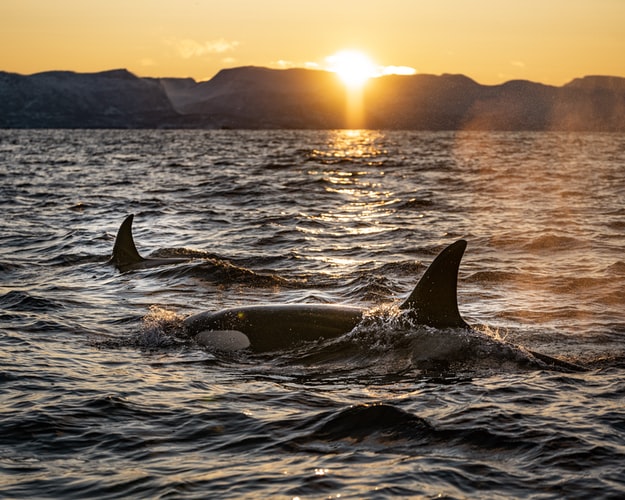
Orcas and great whites are two of the heaviest creatures in the ocean. Male orcas weigh between 8000 to 12000 pounds on average, while females weigh between 3000 and 6000 pounds.
In contrast, the male great white shark weighs anywhere between 1150-1700 pounds, and the female great whites weigh around 1500 to 2450 pounds.
Life span
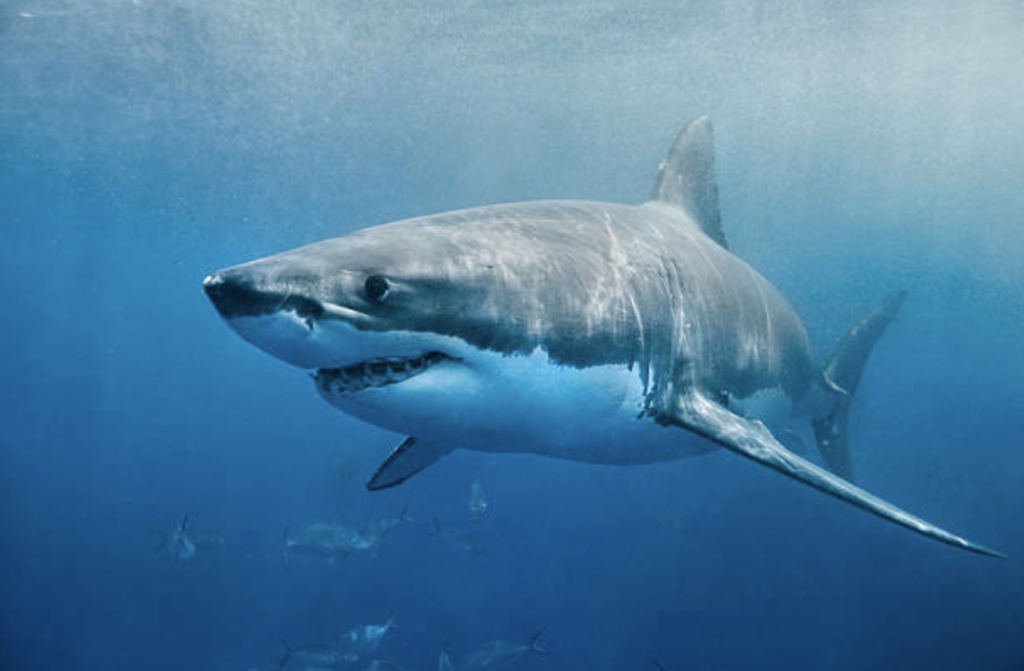
The typical life expectancy of a great white shark is 40 – 70 years old; this is a significant distinction from what the researchers’ thought initially. Until 2014, specialists felt that great white sharks lived for 25 to 30 years.
However, recent studies conducted by Marine and Freshwater Research show that great white sharks can grow slowly and live longer than scientists thought; they concluded that great whites could live up to the age of 73.
In the case of Orcas, at the time of birth, the average life expectancy of killer whales is around 29 years for females and 17 years for males. However, suppose a killer whale survives the first six months. In that case, a female’s average life expectancy is 46 to 50 years, and a male’s average life expectancy is 30 to 38 years.
Both these apex predators have a reasonably decent life span. An orca has a lifespan of 30 to 50 years (in the wild), and a great white has a lifespan of 40-70 years.
Speed
Speed plays a vital part in the hunting capacities of the orcas and the great white, but it’s safe to say that the orca is the faster of the two. It is the second fastest marine mammal and can reach up to 56 kilometers per hour(35 mph), while the great white cruises at around 40 kilometers per hour (15mph).
Hunting and Diet
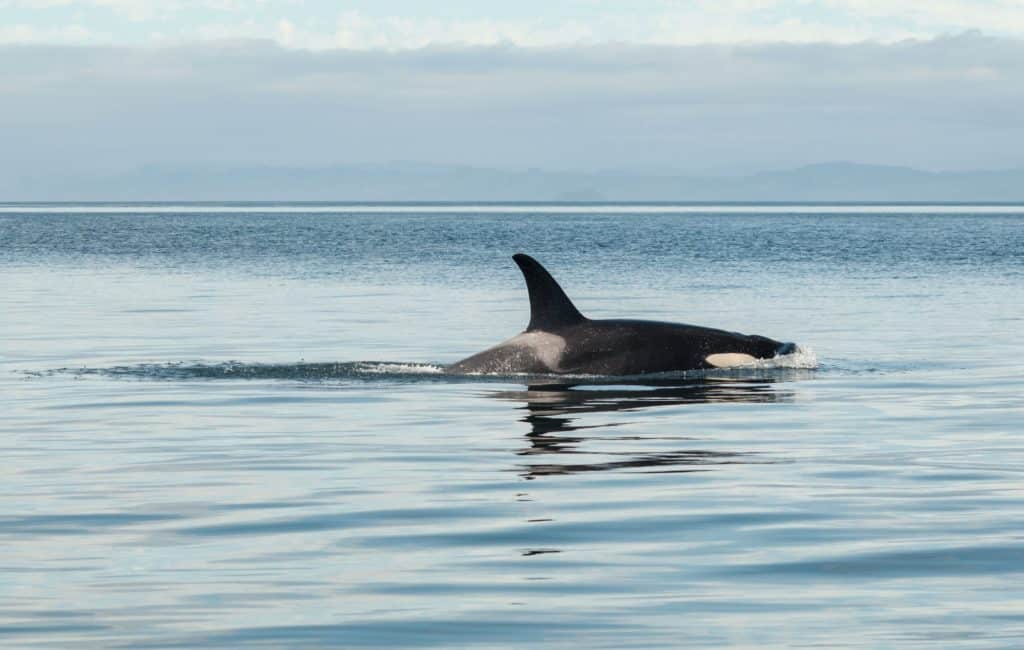
Great white sharks are highly specialized predators equipped with around 300 sharp, triangular teeth arranged in multiple rows within their mouths. They possess an exceptional sense of smell, enabling them to detect prey from considerable distances. Additionally, great whites can perceive electromagnetic fields produced by animals using specific organs, which aids them in locating hidden prey. Their diet includes a variety of creatures such as other sharks, crustaceans, mollusks, and sea birds. For larger great whites, their prey may also consist of sea lions, seals, and small-toothed whales like orcas.
In contrast, killer whales, or orcas, are skilled hunters that operate in lethal pods, often comprising up to 40 members. These pods employ effective and coordinated hunting techniques, somewhat resembling those seen in wolf packs. There are two main types of orca pod populations: resident and transient. These groups target different animals and employ distinct hunting strategies. Resident pods tend to focus on fish, while transient pods specialize in hunting marine mammals.
Orcas are found in various regions, from polar to equatorial waters. As apex predators, they have a diverse diet that includes penguins, fish, and a range of marine mammals such as whales, sea lions, and seals. Their teeth can reach lengths of up to four inches, facilitating their ability to capture and consume a wide array of prey.
Interesting facts in the comparison between the Orca vs Great White Shark.
Habitat
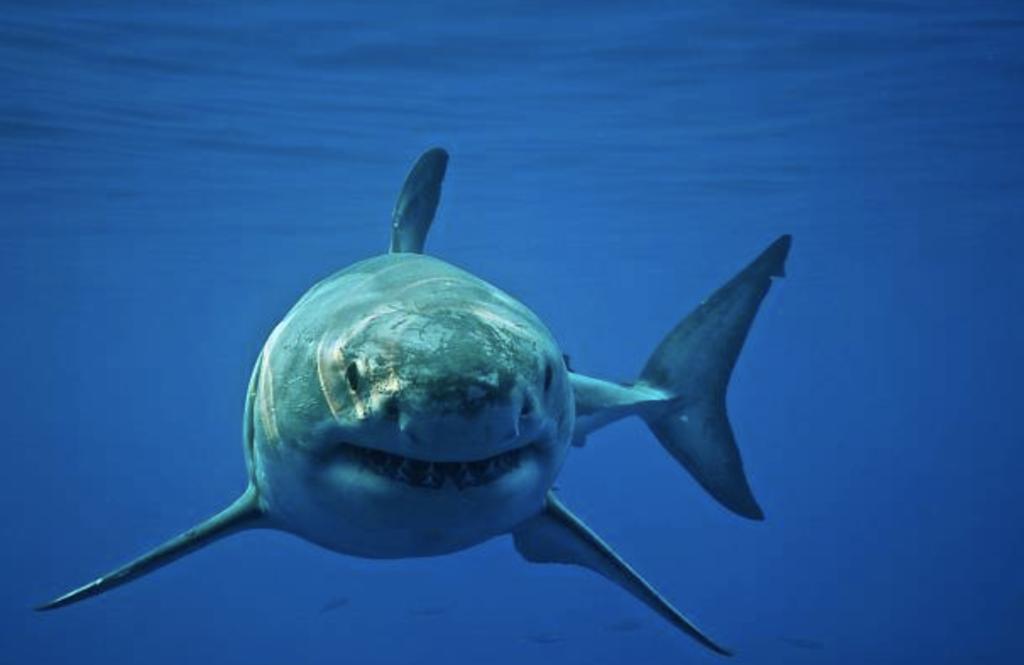
Great white sharks live in practically all coastal and offshore waters, which have water temperatures somewhere in the range of 12-24 °C, with greater concentrations in the US (Northeast and California), Japan, South Africa, Oceania, Chile, and the Mediterranean including the Sea of Marmara and Bosphorus.
One of the densest populations is around Dyer Island, South Africa. In shallow coastal nurseries, juvenile great white sharks have a tight temperature band (between 14 and 24 °C). Increased sightings of young sharks in regions that were not common, for example, Monterey Bay on the Central California coast, suggest environmental change might be diminishing the range of adolescent great white sharks and moving it toward the poles.
The great white shark is commonly observed in proximity to abundant prey such as fur seals, sea lions, cetaceans (whales, dolphins, and porpoises), various shark species, and large bony fish. Surprisingly, it has been spotted at depths as extreme as 1,200 meters, challenging the traditional notion that the great white is primarily a coastal species. These findings highlight the versatility of this apex predator within the vast expanse of the ocean.
Conversely, orcas, also known as killer whales, inhabit both seawater and most of the world’s oceans. Due to their extensive range, population numbers, and varying distribution, it can be challenging to precisely estimate their relative abundance. However, they tend to favor higher latitudes and coastal regions over pelagic (open ocean) environments in their distribution patterns.
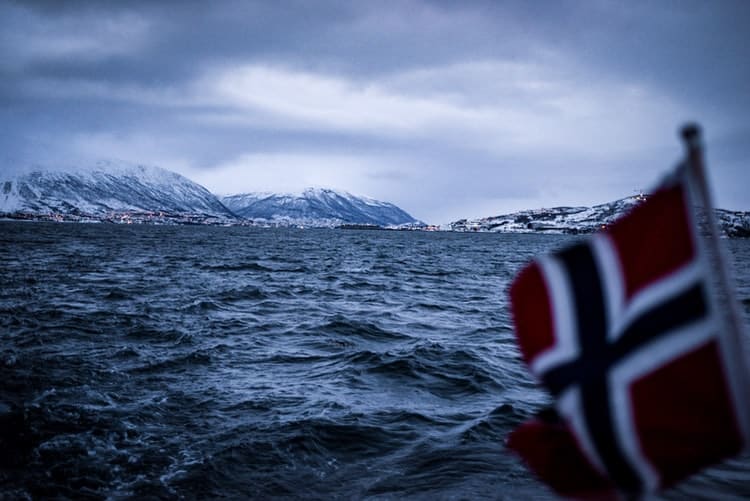
Areas that act as significant study sights for the species include the coasts of Iceland, Norway, the Valdes Peninsula of Argentina, the Crozet Islands, New Zealand, and portions of the North American west coast, from California to Alaska.
Systematic surveys show the most densities of orcas (>0.40 individuals per 100 km2) in the upper east Atlantic around the Norwegian coast, the north Pacific along the Aleutian Islands, the Gulf of Alaska in the Southern Ocean off much of the shoreline of Antarctica. Considered “common” (0.20-0.40 people per 100 km2) in the eastern Pacific along the coasts of British Columbia, Washington, and Oregon, in the North Atlantic Sea around Iceland and the Faroe Islands.
In the Antarctic, orcas range up to the edge of the pack ice and wander into the denser pack ice, finding open leads like beluga whales in the Arctic. Nonetheless, orcas are occasional guests to Cold waters and don’t move toward the pack ice in the summer.
With the fast Arctic sea ice decline in the Hudson Strait, their reach extends into the northwest Atlantic. Sometimes, orcas swim into freshwater streams. They have been recorded 100 miles (160 km) up the Columbia Waterway in the United States. They are also in Canada’s Fraser River and the Horikawa River in Japan.
Migration patterns need to be better understood. Each mid-year, the same individuals show up on the coasts of British Columbia and Washington. Despite many years of research, where these creatures go until the end of the year stays a secret. Many spots of transient pods have been from southern Alaska to central California.
Behavior – Orca vs Great White Shark
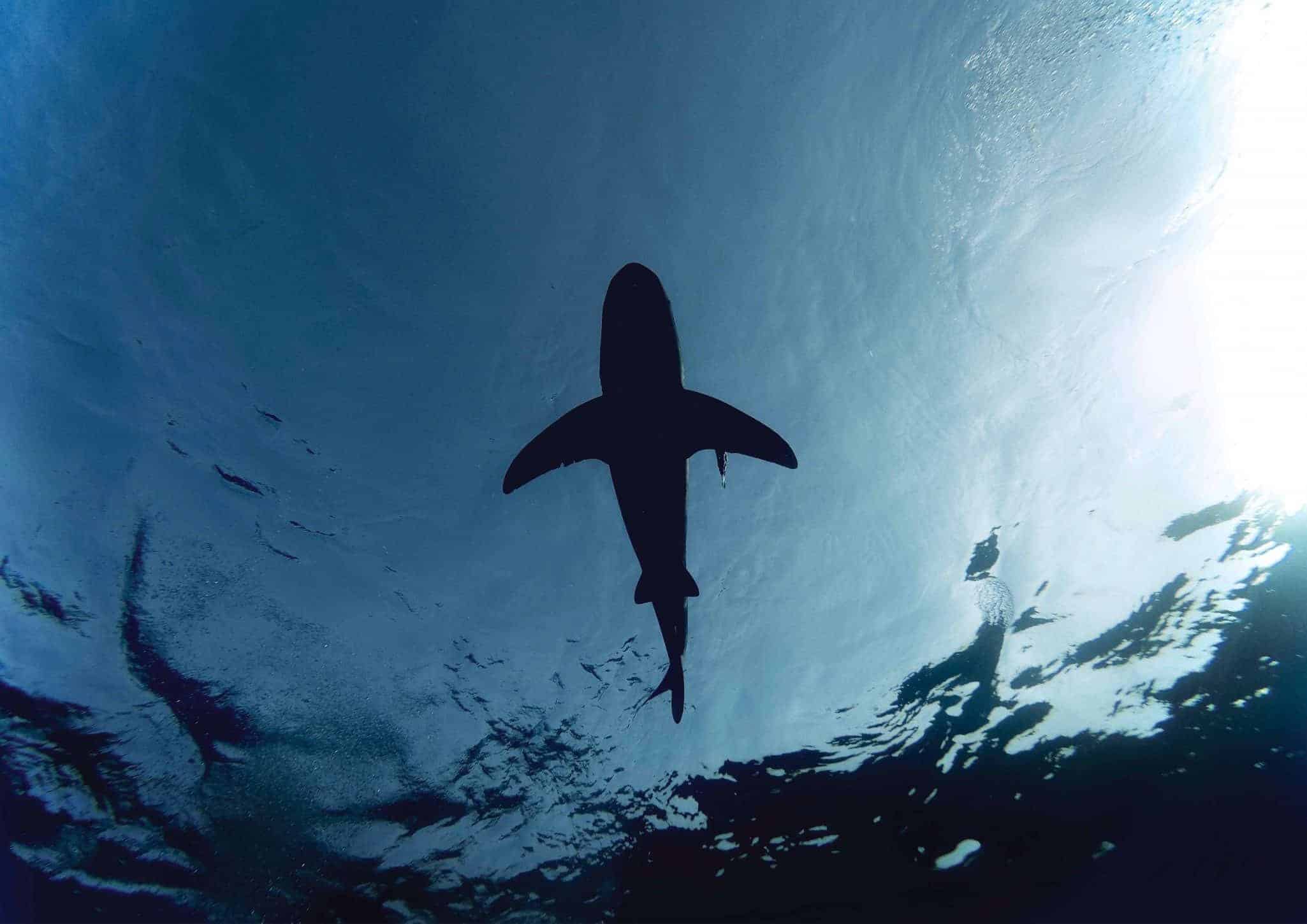
Everyday behavior among orcas encompasses a range of activities such as hunting, traveling, resting, and socializing. Orcas are known for their frequent engagement in surface behaviors, including breaching (leaping out of the water) and tail-slapping. These behaviors serve various purposes, including communication, courtship, dislodging parasites, or simply play. Spyhopping is another intriguing behavior where a whale raises its head above water to observe its surroundings. Resident orcas are often seen swimming alongside porpoises and other dolphins.
Conversely, the behavior and social structure of great white sharks are notably intricate. In South Africa, great white sharks establish a hierarchy based on factors such as size, sex, and territorial rights. Females typically dominate males, larger sharks prevail over smaller ones, and resident sharks assert their dominance over newcomers. While hunting, great white sharks often employ separation and conflict resolution through rituals and displays. Actual physical combat is relatively rare, although some individuals bear bite marks that match those of other great white sharks.
Great white sharks exhibit the unusual behavior of regularly lifting their heads above the ocean surface in a process known as spy-hopping. This behavior may aid in better smelling their surroundings, as scent travels faster through the air than through water.
Generally, great white sharks are highly curious creatures, displaying intelligence and occasionally even socializing when the situation demands it. At locations like Seal Island, groups of two to six great white sharks have been observed arriving and departing together annually, forming stable “groups.”
Appearance – Orca vs Great White Shark
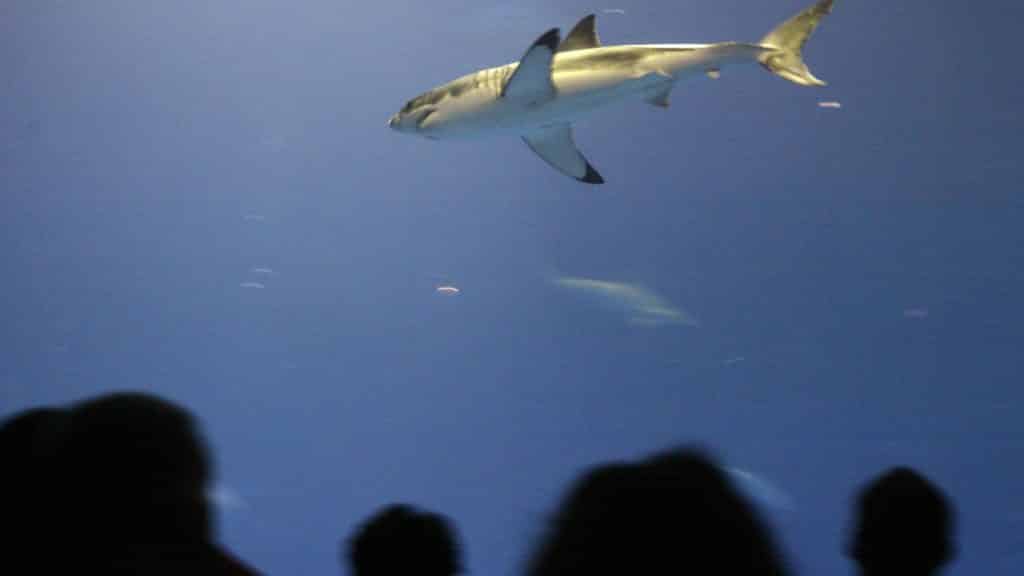
A great white shark displays countershading because it has a gray dorsal area and white underside. These colors make it very difficult for the prey to spot the shark because, when looked at from the top, the dark color blends in with the sea.
When viewed from the bottom, the white underside blends in with the sunlight, and when viewed from the side, this coloration breaks up the shark’s outline.
Great white sharks, like other sharks, have columns of serrated teeth behind the principal ones, prepared to supplant any lost. When the great white bites, it shakes its head side-to-side, helping the teeth cut off huge pieces of flesh.
Like other mackerel sharks, great white sharks have bigger eyes than other shark species in relation to their body size. The iris of the eye is a dark blue rather than black.
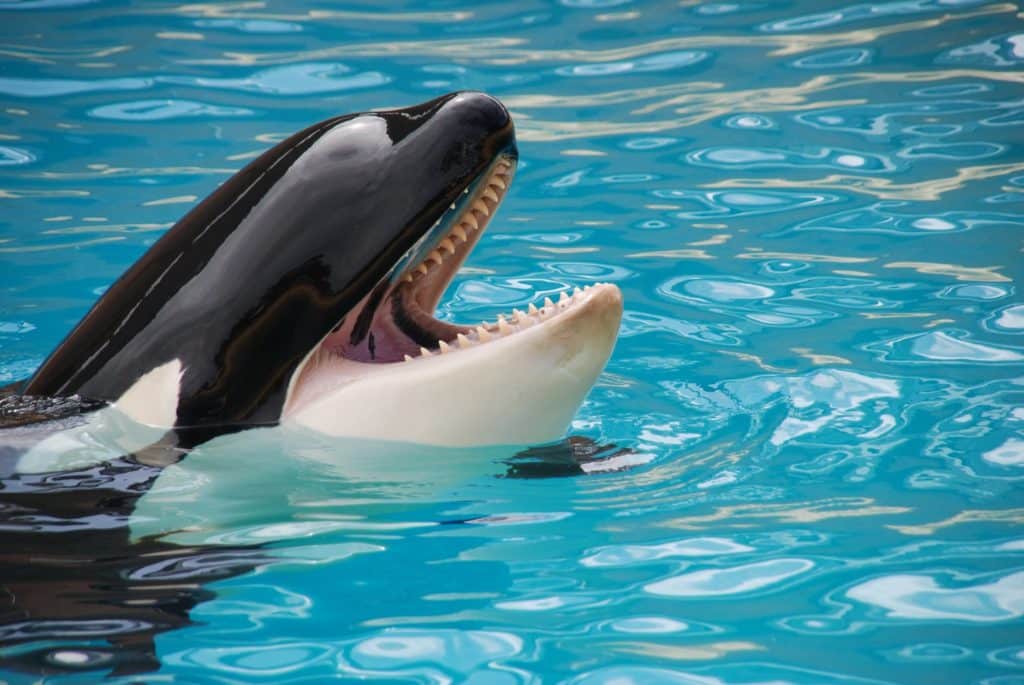
The general body shape of an orca is generally barrel-shaped but tightened at the two closures. This trademark fusiform shape is very energy proficient for swimming. Compared to other body shapes, this shape makes less drag (force opposing the motion).
Orcas are black and white but have a gray patch on the back known as a “saddle.” A killer whale has smooth skin; the outer layer rapidly renews itself, and the old skin sloughs off.
The increased skin cell turnover increases swimming efficiency by creating a smooth body surface which reduces drag. The entire top of the orca is black, other than the saddle, whereas the bottom is white.
This coloration helps the orcas blend in with the environment, similar to the great whites; since Killer whales are counter-shaded, the top (dorsal) surface is darker than the underneath(ventral) surface.
When viewed from above, counter-shaded animals blend with the darker ocean, and when viewed from below, the white belly surface blends in with the brighter sea surface. When viewed from the side, this countershading breaks up the outline of the orca, confuses other animals, and they don’t think of Orcas as a potential predator.
Orcas have only one set of large conical and interlocking teeth with no replacements if lost. Usually, there are 40-56 teeth, with 10-14 on each side of the jaw varying among individuals.
The teeth are 3 inches in length and 1 inch in diameter. Killer whales don’t use their teeth to chew their food; instead, they use them to grasp their prey and tear their food into smaller pieces.
Reproduction
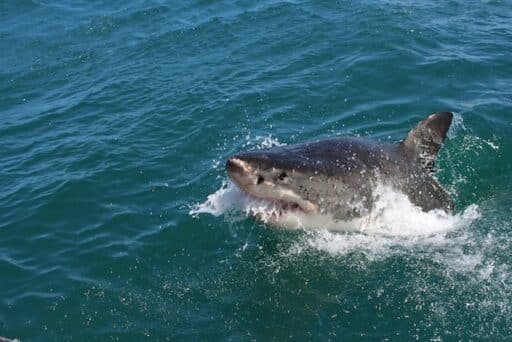
Previously scientists thought great white sharks reach sexual maturity by the age of 15 years, but now, after recent studies, scientists have realized that it takes much longer. Male great whites reach sexual maturity at 26, and female great whites take 33 years to reach sexual maturity.
There is not much information about the great white shark’s mating propensities, and the mating process is known. No spotting of birth has occurred, yet scientists have analyzed pregnant females. Great white sharks are ovoviviparous, implying eggs created are brought forth in the uterus and keep on creating until birth.
The great white has an 11-month incubation period. The shark pup’s strong jaws start to develop in the first month. The unborn sharks take part in oophagy, feeding on ova created by the mother. The delivery period is usually in the spring and summer. The biggest number of pups recorded for this species is 14(from a single mother).
In the case of Orcas, males reach sexual maturity between 10-13 years females reach sexual maturity between 6-10 years. Usually, they are pregnant for 15-18 months and give birth to a single calf (every 6 to 10 years until they are about 40 years old).
The females then act as calves and nurse exclusively for at least a year but remain closely associated with their mother for the first two years. Birth can take place in any month. The birth rate for killer whales is not well understood. In some populations, the estimated birth rate is at every five years for an average of 25 years.
Orca vs Great White
Albeit the great white shark has a fearsome reputation, in a head-to-head battle, the orca outmatches the great white shark. In addition to the fact that orcas are much bigger, they are also more clever than great whites. Great whites are presently known to be warm-blooded; however, orcas have higher metabolic rates since they inhale air. In the wild, orcas go after great white sharks, and great white sharks often avoid the places where orcas are present.
The Final Say on Orca vs Great White Shark
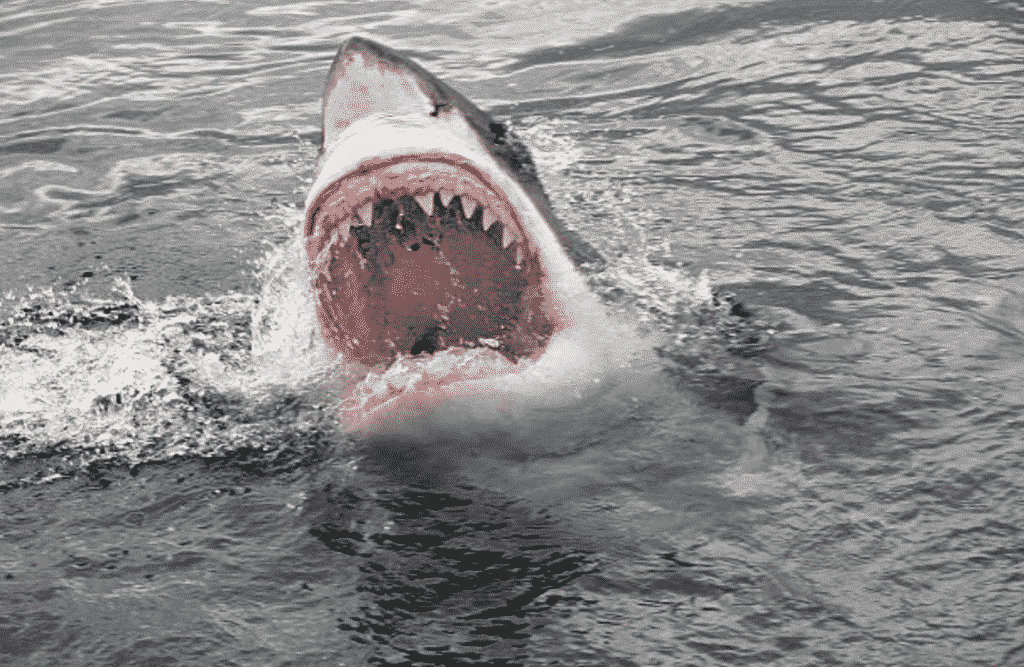
The orca and the great white are both apex predators and are unique in their ways, having different qualities which enable them to be at the top of the food chain.
There is little comparison because orcas hunt in pods and are sophisticated pack hunters. With their advanced communicative abilities, orcas put other well-known predators that hunt in groups to shame. In contrast, great white sharks are incredible solitary hunters.
Also have a look at our other articles: Great White Sharks and Orcas.
- Animals and Wildlife in Colorado - April 24, 2024
- Best Places to see Sloths - April 24, 2024
- Where to See Alligators in the Wild - April 24, 2024

